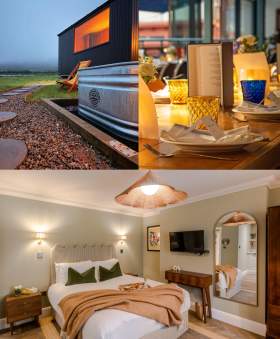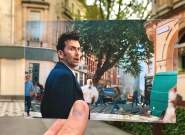Thursday 8 May 2025 was the 80th anniversary of Victory in Europe or VE Day, which marked the end of the Second World War in Europe.
Due to its size, docks and strategic importance, Bristol played a key role in the Second World War and also saw a huge amount of devastation during bombing raids from 1940 - 1944. The 'Bristol Blitz' saw the heaviest bombing raids from autumn 1940 until spring 1941.
We've put together this itinerary so that you can explore key locations from Bristol's wartime history, from air raid shelters to memorials, and even the place where many of the plans for D-Day were drawn up!
Old City
A good starting point for understanding the city's experience of the Second World War is by booking the St. Nicholas Market and Air Raid Shelter Walking Tour, which takes you on a guided walking tour of Bristol's history through the centuries, culminating in a tour of a well-preserved air raid shelter under the city centre streets. The tour is filled with fascinating facts and objects from the Second World War, giving you even more insight into what life would have been like for Bristolians during this time.
Once you've finished the tour, you can take a stroll around the Old City, where you can still see bomb damage on several buildings, such as St Nicholas Church.
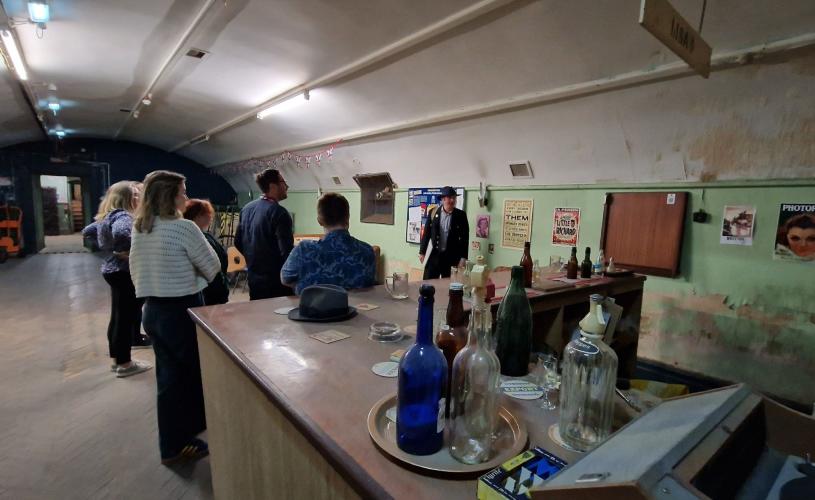
Image - St. Nicholas Market and Air Raid Shelter Walking Tour
The Bristol Basin
During the Second World War, American supply ships needed ballast to make the return trip to the USA. There was plenty of rubble for them to fill their ships with in Bristol, as much of the city had been destroyed by bombing on the city. On arrival in New York, they dumped these bits of Bristol in East River Drive, now known as ‘The Bristol Basin’ and built on top of it.
At least five members of the star’s Bristol-based family are known to have died in the 'Bristol Blitz' and in 1974 Grant unveiled a plaque in New York dedicated to ‘The Bristol Basin’ and those whose homes and lives were destroyed. A duplicate of the plaque can be found on St Augustine’s Parade in Bristol, just across from the Bristol Hippodrome.
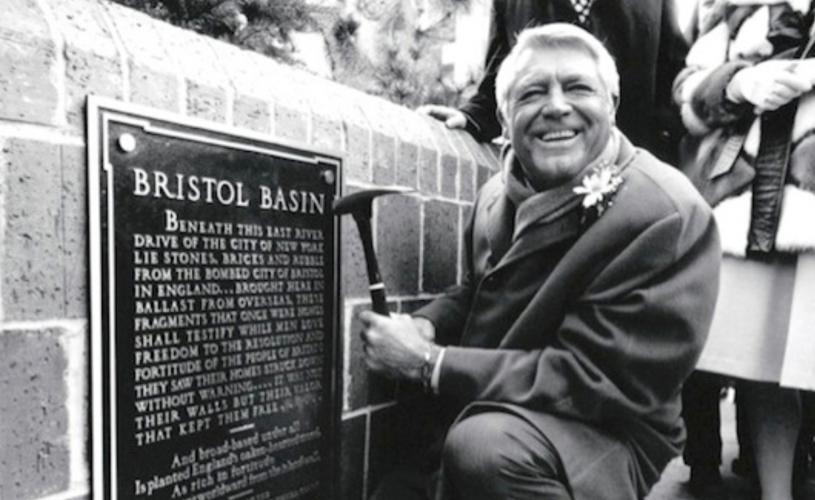
Image - Cary Grant in Bristol Basin, New York
Bristol Grand Hotel
In the middle of the Old City, you'll find one of its oldest and, as the name would suggest, grandest hotels. During the Second World War, the Bristol Grand Hotel on Broad Street was the secret base for a network of spies who operated out of the building on behalf of the British government. Hotel employees would pass them encrypted notes which provided them with information about where they were required to travel, while Temple Meads station provided covert trains that transported them around the country to secret locations.
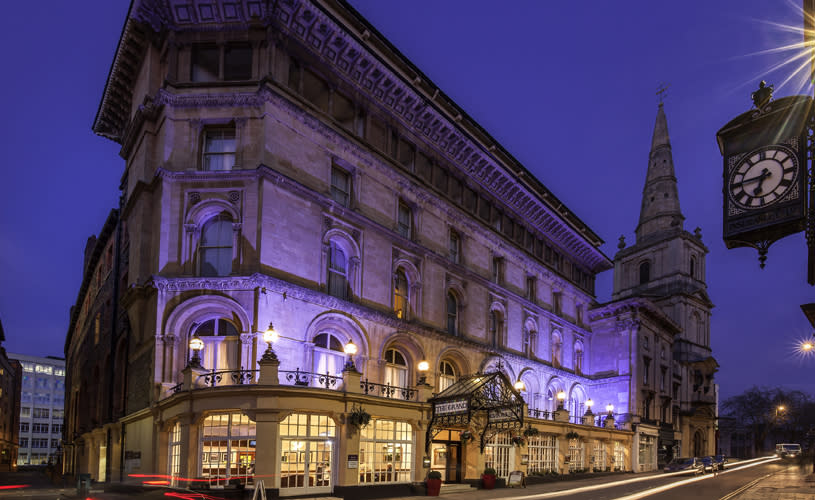
Image - Bristol Grand Hotel
Castle Park and St Peter's Church
From the Mercure Bristol Grand, walk to the bottom of Broad Street and cross over the road - you'll find yourself in what was once the thriving heart of the city and home to many of Bristol's most beautiful buildings. Castle Park provides a stark contrast to the pre-1940s photos of this area, where you can see a narrow maze of streets packed with Tudor and medieval buildings, from homes to shops, pubs and theatres.
The city was changed forever when a particularly devastating air raid took place on the night of 24 November 1940, when over 12,000 incendiary bombs were dropped on Bristol. Some of the worst damage occurred where Castle Park is now, as many of the buildings were made of wood and so were completely destroyed, including important historic buildings such as The Dutch House and St Peter's Hospital, both dating from the 17th century.
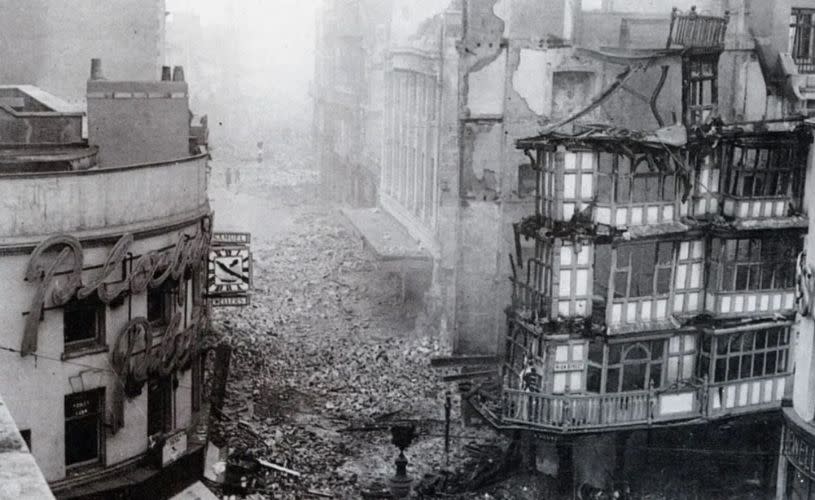
Image - The Dutch House on High Street after The Bristol Blitz
The bombed-out skeleton of St Peter’s Church in Castle Park is a memorial to the 1,299 people killed during 77 air raids over the city throughout the Second World War. You can see memorial plaques at the front of the church, and nearby are seven Silver Birch trees in memory of the seven beaches of the D-Day landings. Next to St Peters Church, you can also see the Sikh War Memorial, which lists the names of soldiers from Bristol who died fighting in both World Wars.
Series three of the BBC series A House Through Time with David Olusoga traced the history of a single 18th century house in Redcliffe, with episode 2 focusing on stories from the Bristol Blitz - you can watch the episode on BBC iPlayer to learn more, see maps of the bomb damage and hear accounts from Bristol residents who witnessed the bombing raids.
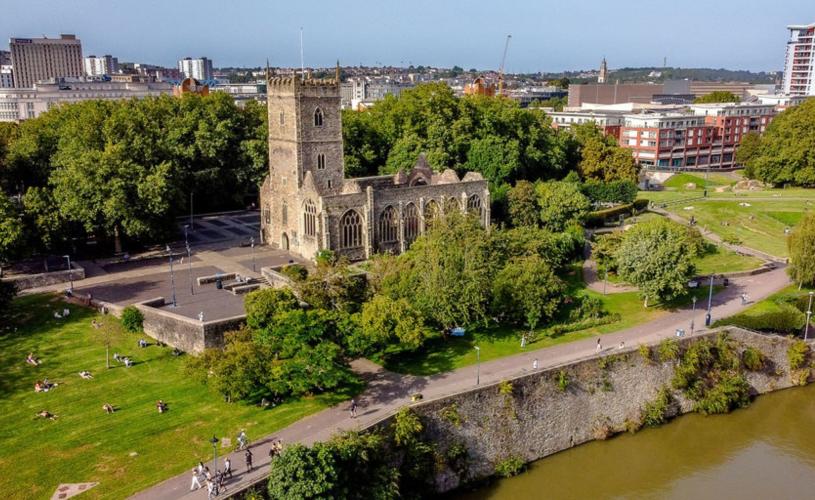
Image - Castle Park and St Peter's Church
M Shed
From Castle Park, you can either hop on a Bristol Ferry and take the waterbus service to Wapping Wharf, or follow the river around, along Welsh Back and The Grove, then across Prince Street Bridge to M Shed. Bristol's museum of local history is packed full of interesting stories and artefacts from the city's past. In the ground floor 'Bristol Places' gallery you will find a replica Anderson Shelter and a fire-watch shelter, as well as objects such as gas masks, blackout equipment and wartime posters. There is also a video you can watch about the Bristol Blitz and WW2 bomb damage to buildings around the city.
The museum stands on the site of a former 19th century granary, which was destroyed by a bombing raid in 1941 - you can see a large black and white pile cap from the granary, which was saved from the wreckage on the quayside in front of the museum.
Nearby, you'll also see the Fairbairn Steam crane, which was used for loading landing craft during the war, and keep a lookout along the harbourside for Bristol's impressive fire-boat Pyronaut, which helped to put out fires in homes, shops and warehouses around the Floating Harbour throughout bombing raids.

Image - Pyronaut at Bristol Harbour Festival
St Mary Redcliffe Church
From M Shed, head back across Prince Street Bridge and along The Grove to cross Redcliffe Bridge, where you'll then see the gothic masterpiece of St Mary Redcliffe Church on the other side of the road.
With parts of the church dating from the 12th century, it is one of Bristol's oldest and most impressive buildings, which miraculously survived numerous bombing raids and direct hits, mostly due to the efforts of volunteers (including the local vicar) who spent nights kicking off incendiary bombs as they landed on the roof of the church.
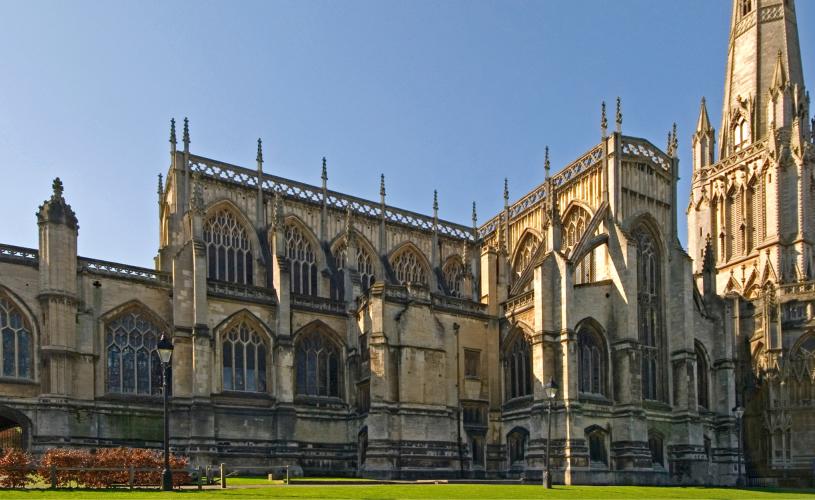
Image - St Mary Redcliffe
The churchyard to the rear of the church has its own story to tell, with a large piece of tramway sticking out of the grass at an angle. The tramway was propelled to this spot by an enormous Luftwaffe bomb in 1940. The section of track was sent soaring over the row of nearby houses and was thrust into the ground like a javelin. It is now kept as a reminder not just of the losses suffered during WWII but also how close the church once came to total destruction.
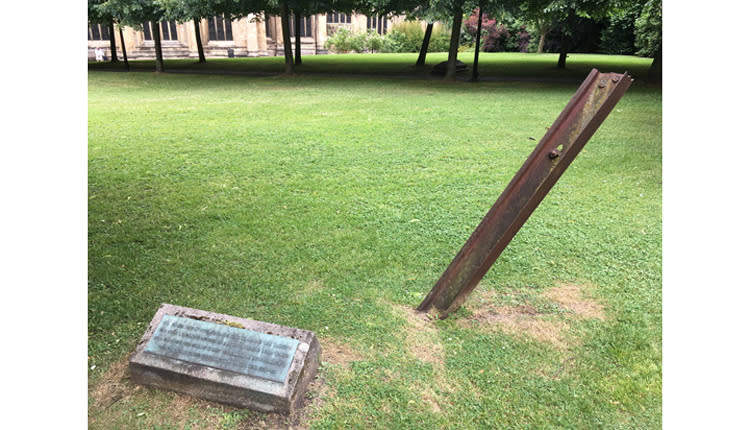
Image - Tramway in St Mary Redcliffe churchyard
Temple Church
Once you have explored St Mary Redcliffe, you can cut through the side streets of Redcliffe and cross Victoria Street, where you'll see the distinctive leaning bell tower of Temple Church.
Founded by the Knights Templar in the 12th century, this church was heavily damaged by German bombing in the Second World War, leaving the shell we see today. You can walk inside the church ruins or take a moment to reflect in the neighbouring Temple Gardens.
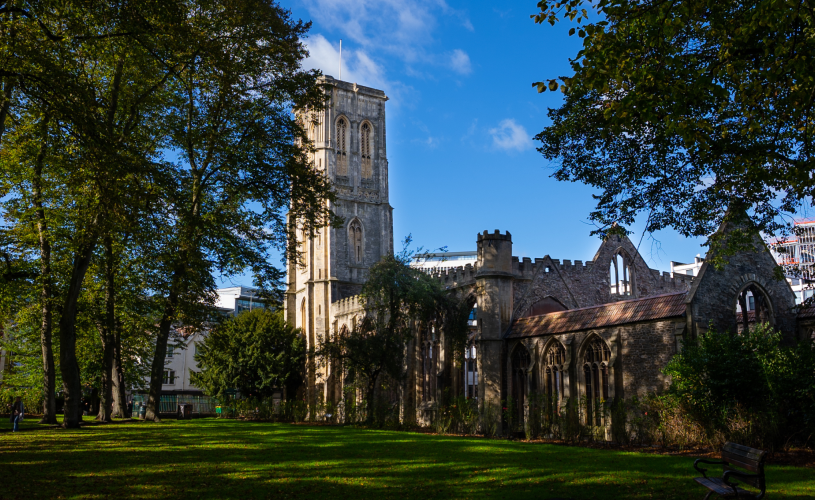
Image - Temple Church
The next part of our itinerary takes in some historic sights in the pretty suburb of Clifton, which has its fair share of stories from the Second World War. From Temple Church, you can cut through Temple Gardens to Temple Way and take one of several buses towards Clifton, or walk/cycle along Victoria Street and Baldwin Street to the centre, where you then follow Park Street up the hill.
Bristol Museum & Art Gallery
Opened in 1905, Bristol Museum & Art Gallery is housed in a beautiful building that was struck several times during bombing raids. At least one incendiary bomb fell on the Museum and Library building next door (now Brown’s bar and restaurant), gutting the building and destroying the collections inside. An incendiary bomb also fell through the glass roof of the Art Gallery & Museum of Antiquities next door; luckily, the fire was contained and the exhibits and building were saved.
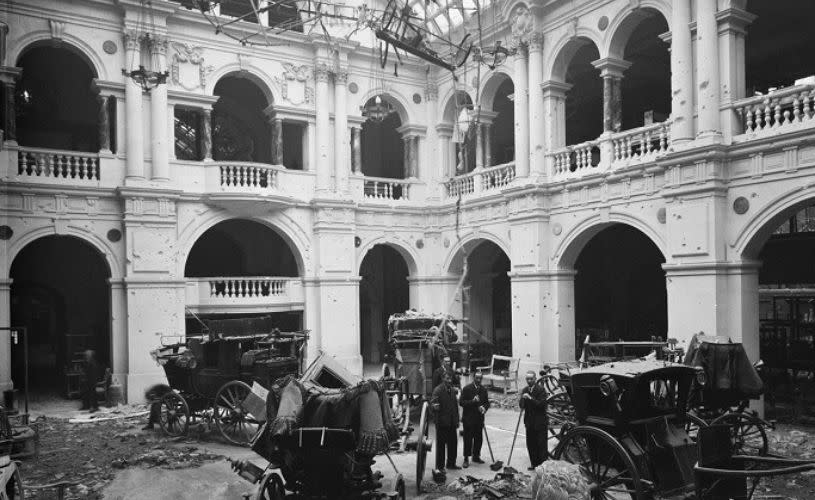
Image - Bristol Museum after bombing raid. Bristol Museums
When visiting the museum, see if you can spot the bomb damage on the pillars around the Winterstoke Hall. You may also spot Alfred the Gorilla in the first floor gallery - Alfred lived at Bristol Zoo Gardens throughout the 1930s and 1940s and was popular with visiting soldiers during the Second World War, who sent home postcards and photos of Alfred.
A lesser-known animal story from this period is that of Juliana the dog, who was awarded the Blue Cross Medal for extinguishing an incendiary bomb that had fallen through the roof of her home during the Bristol Blitz by weeing on it!
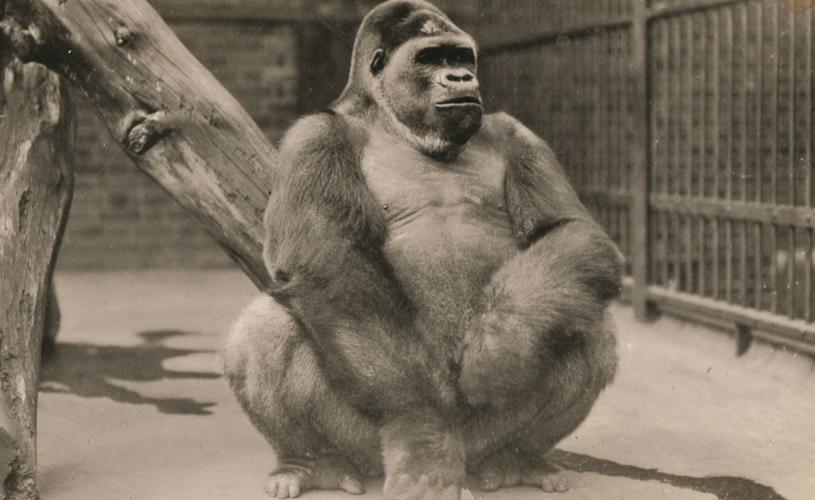
Image - Alfred the Gorilla at Bristol Zoo Gardens
Birdcage Walk
From Bristol Museum, you can take the 8 or 9 bus to Victoria Square in Clifton, or it is around a 15 minute walk. This small graveyard in Clifton Village is one of the lesser-known burial sites in the city. Taking its name from the verdant arches that line the walkway across the graveyard, this is all that remains of St. Andrews Church – built in the 12th century but destroyed in the Bristol Blitz. Birdcage Walk is a uniquely tranquil place to while away an afternoon.
- Find out more Clifton history on a 'Crime and Crinolines in Clifton' walking tour
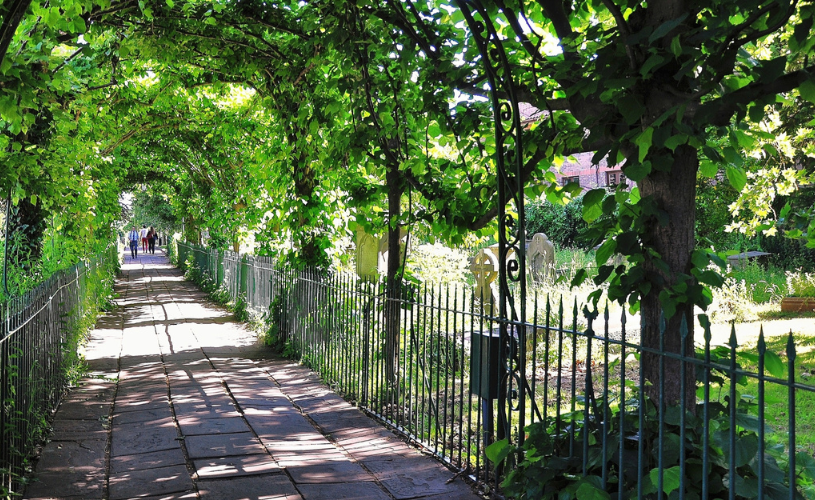
Image - Birdcage Walk in Clifton
Clifton Rocks Railway
Just by the Clifton Suspension Bridge, Clifton Rocks Railway operated for 40 years before closing in 1934. The tunnel was then used by both the Civil Defence Committee and the BBC during the Second World War.
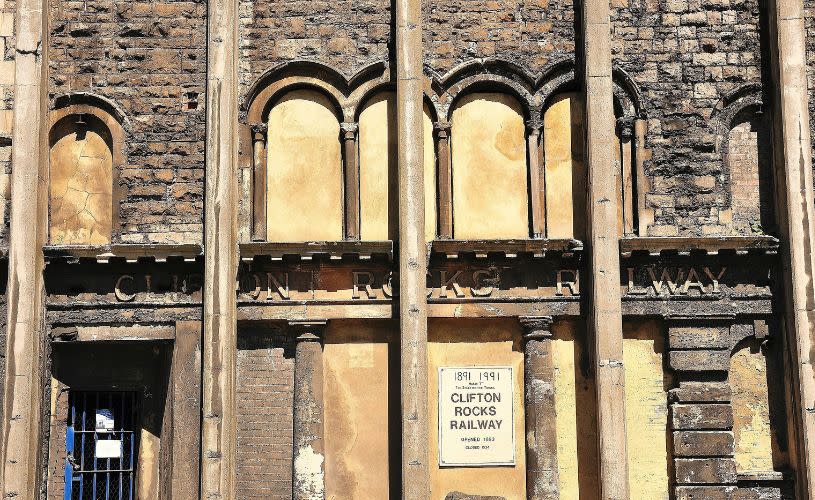
Image - Clifton Rocks Railway
Clifton College
From Clifton Rocks Railway, it's around a 15-20 minute walk to Clifton College. It was here in Bristol that the plans for the D-Day landings were drawn up by US First Army commander General Omar Bradley and his staff. Bradley and his team were based at Clifton College between 1943 and 1944 and used the Council Room for much of their detailed planning.
- Explore the Bristol sites used by the US Army in the Second World War by downloading this self-guided tour

Image - Clifton College. Credit: Angharad Paull
Bristol Botanic Garden
Across the Downs from Clifton College is the University of Bristol Botanic Garden. In the lead up to the D-Day invasion, thousands of American GIs were stationed across Bristol and the surrounding areas, with the site of what is now the Botanic Garden (then called 'The Holmes') turned into a home for American Generals for several months - it was even visited by General Eisenhower at one point!
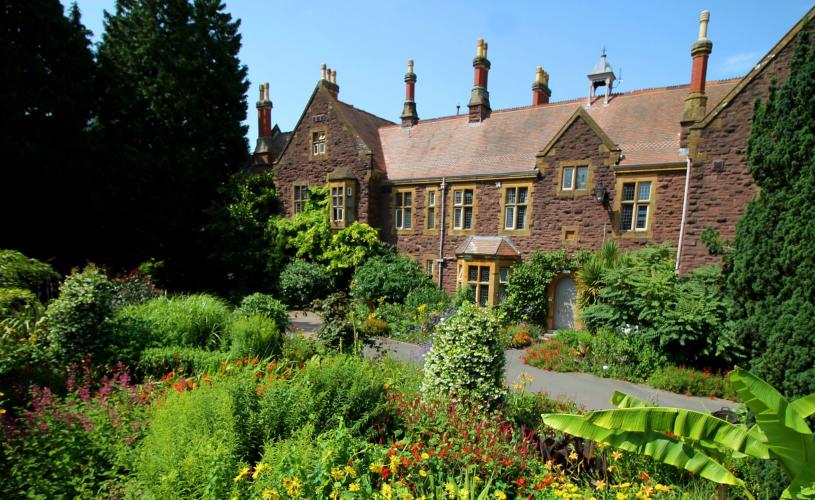
Image - The Holmes at the University of Bristol Botanic Garden
Once you've completed the places we've already listed, here are some other locations outside the city centre where you can find more notable places in Bristol connected to World War 2...
Arnos Vale Cemetery
Soldiers Corner at Arnos Vale Cemetery has war graves for more than 600 British and Allied soldiers, sailors and airmen from both World Wars and older conflicts. A memorial in front of the crematorium commemorates 68 servicemen and women of the Second World War whose remains were cremated there.
In the top south east corner of the cemetery, you will find The Cross of Sacrifice, close to Sailors Corner, where you can find forty naval headstones of sailors who died in Bristol hospitals in the Second World War. You can pick up a list of war graves locations from the East Lodge, next to the Bath Road (A4) entrance of the cemetery.
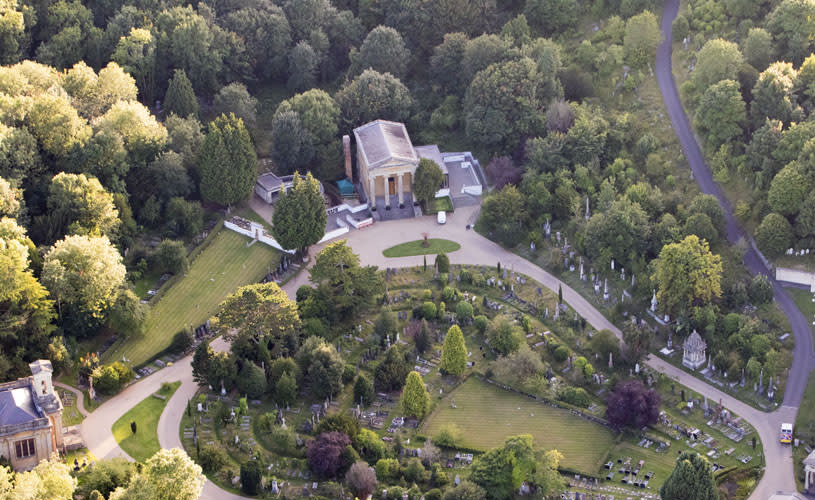
Image - Arnos Vale Cemetery
Aerospace Bristol
Journey through 100 years of aviation history at Aerospace Bristol, with an exhibition dedicated to the Second World War and its effect on the surrounding Filton area, as well as the aviation industry. Get up close with several WW2 planes, including the Bolingbroke bomber, restored by volunteers in Aerospace Bristol's Conservation Workshop.
You can also enter a real WWII air raid shelter in the new Filton Blitz Experience, where you'll hear sirens and bombers overhead and discover stories of real people at RAF Filton.
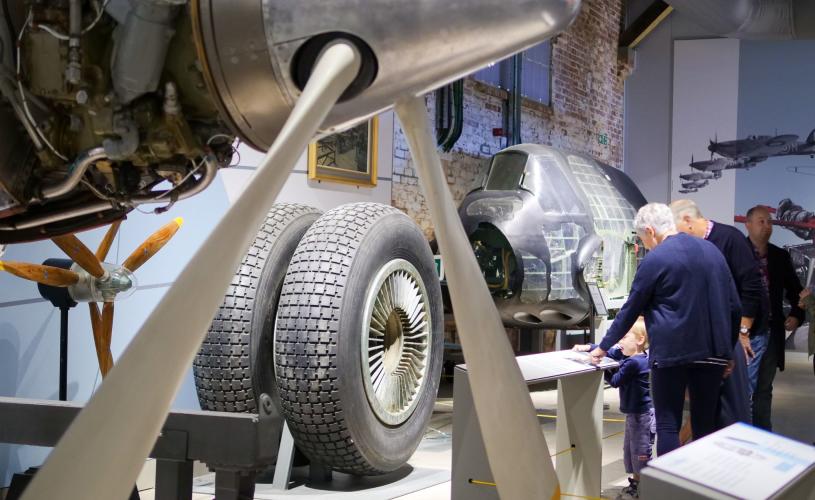
Image - Aerospace Bristol
Kingswood Heritage Museum
Visit this small museum in the east Bristol suburb of Kingswood to step inside a real WW2 Anderson air raid shelter, which came from a nearby garden. The museum also has a new 1940s Home Front display to commemorate the 80th anniversary of VE Day.
Hannover twinning
Bristol and the city of Hannover in Germany have been twinned since 1947, one of the first examples of English and German cities twinned together after the Second World War. In the winter of 1947, the people of Bristol collected shoes to donate to children in Hannover who were unable to go to school because they had no shoes. The cities now run regular exchange trips and collaborative events.
Read more:
